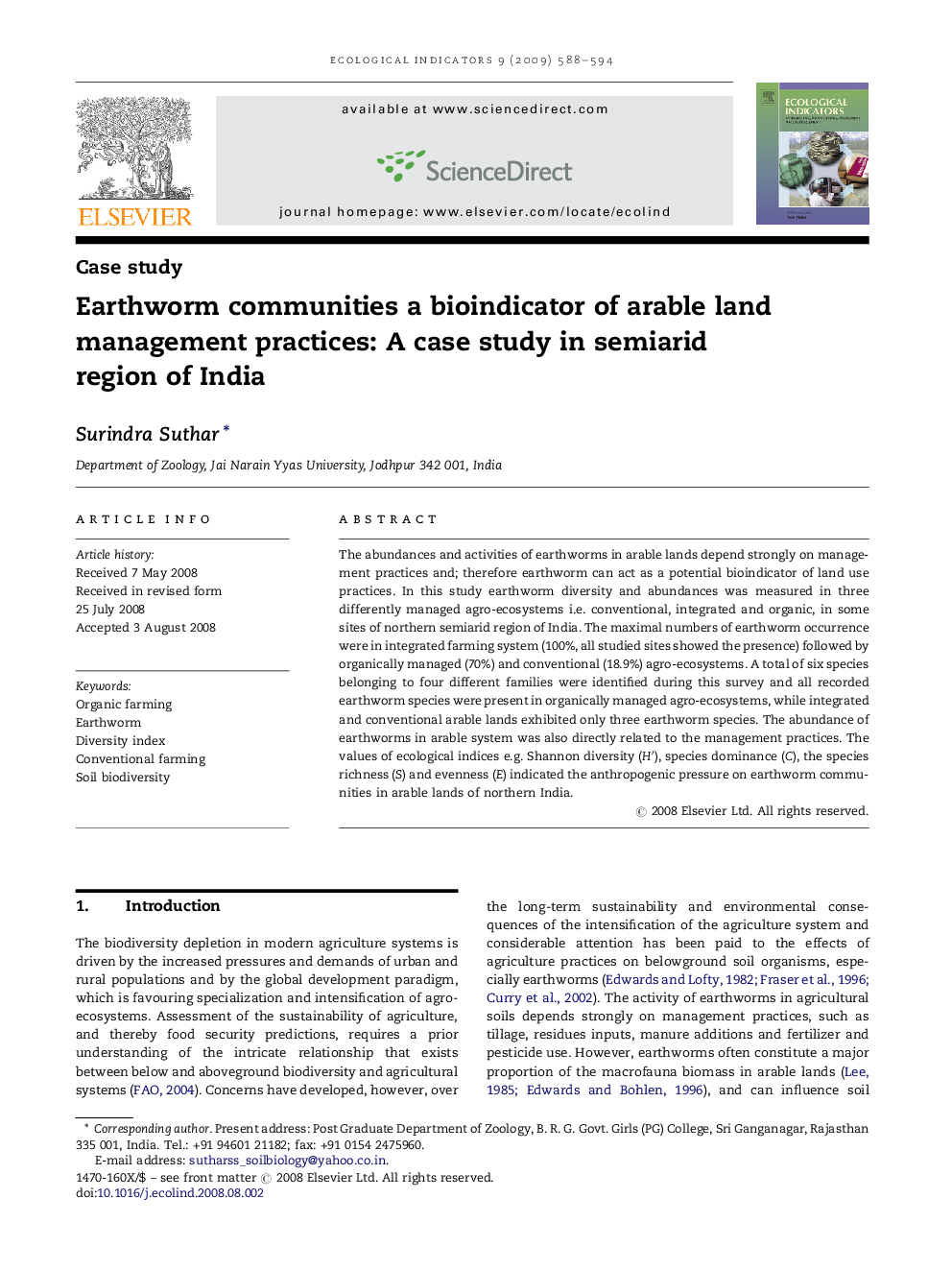| Article ID | Journal | Published Year | Pages | File Type |
|---|---|---|---|---|
| 4374478 | Ecological Indicators | 2009 | 7 Pages |
Abstract
The abundances and activities of earthworms in arable lands depend strongly on management practices and; therefore earthworm can act as a potential bioindicator of land use practices. In this study earthworm diversity and abundances was measured in three differently managed agro-ecosystems i.e. conventional, integrated and organic, in some sites of northern semiarid region of India. The maximal numbers of earthworm occurrence were in integrated farming system (100%, all studied sites showed the presence) followed by organically managed (70%) and conventional (18.9%) agro-ecosystems. A total of six species belonging to four different families were identified during this survey and all recorded earthworm species were present in organically managed agro-ecosystems, while integrated and conventional arable lands exhibited only three earthworm species. The abundance of earthworms in arable system was also directly related to the management practices. The values of ecological indices e.g. Shannon diversity (Hâ²), species dominance (C), the species richness (S) and evenness (E) indicated the anthropogenic pressure on earthworm communities in arable lands of northern India.
Related Topics
Life Sciences
Agricultural and Biological Sciences
Ecology, Evolution, Behavior and Systematics
Authors
Surindra Suthar,
